Best toys to learn colors [+ complete practice guide]
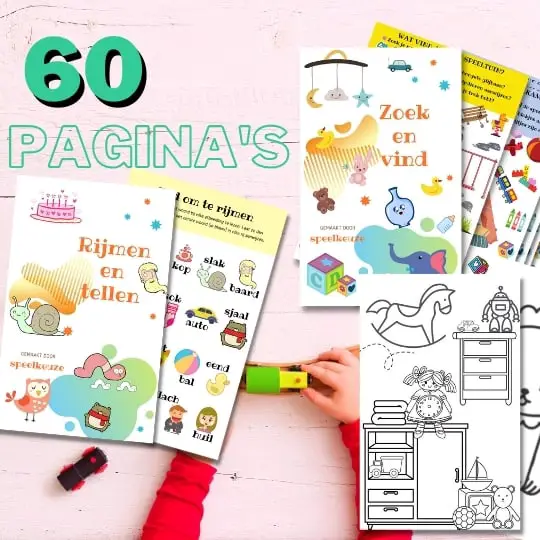
Always something to do for the holidays or rainy day?
Play Choice now has the ultimate activity book collection, with over 60 pages of fun coloring pages and educational puzzles.
What parent doesn't enjoy interacting with his or her toddler and playing educational games?
Learning the colors is also a challenging but fun task. It is nice if your child quickly realizes that there are different colors and can also name them.
However, you should be careful not to set the bar too high for your little one. Some toddlers are simply not ready to learn the different colors.
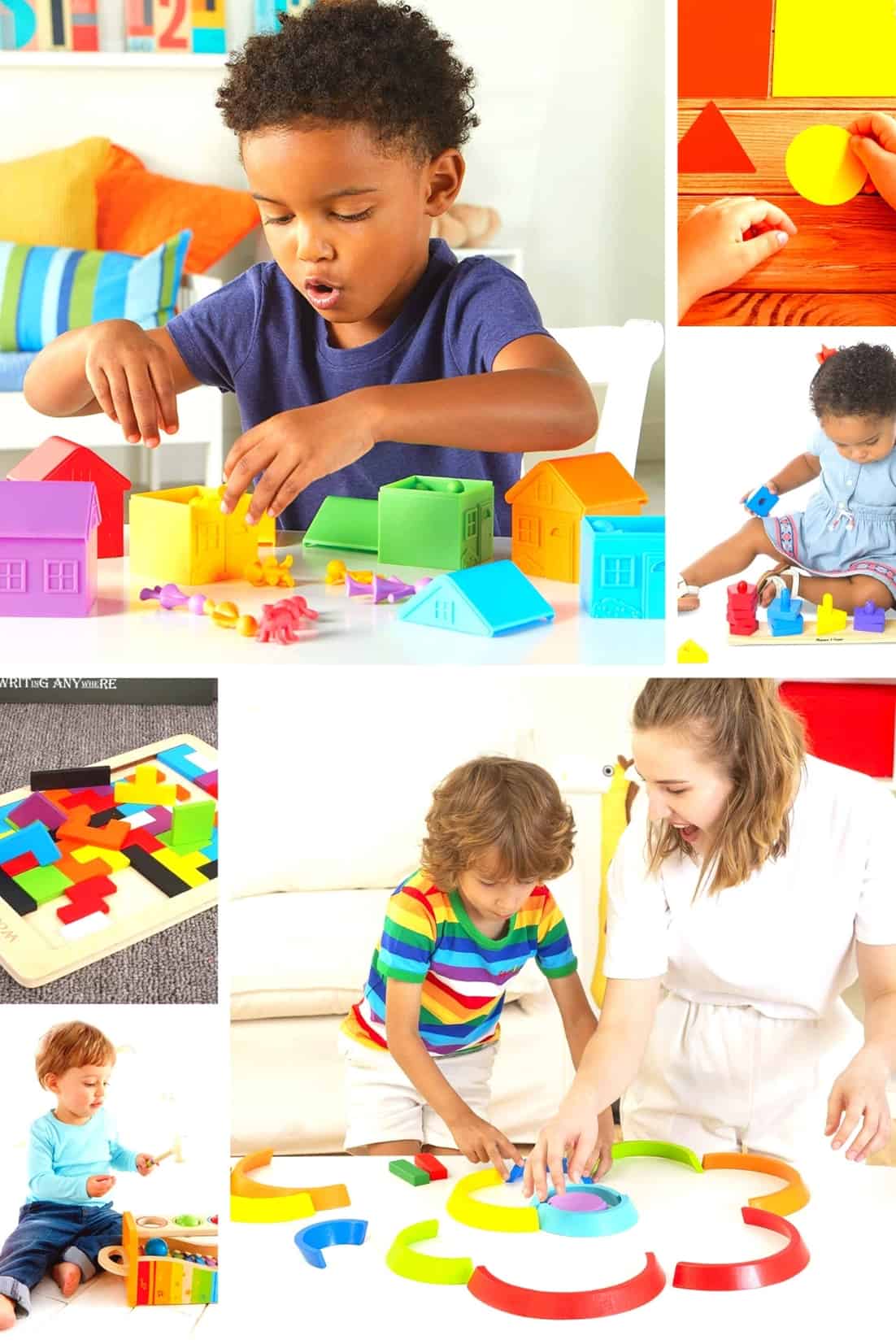
Don't make it too difficult, and especially put it aside if your child gets frustrated.
In this article I'll tell you everything about learning colors.
I will answer any questions you may have about this one milestone in the development of your little one.
I've researched the internet and picked out some of my favorite toy products.
If I had to name an all-time favorite toy product for color learning, it would the Learning Resources Sortingbuurt .
At the time of writing, this toy has received over 500 positive reviews and is rated 4,9 / 5.
The Learning Resources Sorting Area is a lot of fun and educational toys.
You get six houses in different colors, and each house has six figures that match the color of the house. The houses consist of two parts and can therefore also be combined.
It is the perfect toy for learning colors and developing sorting skills. More information about these toys can be found below the table.
Besides the Learning Resources Sorteertbuurt, I have a number of other great options for you when your child is ready to learn colors.
You can find the different options in the table below.
After the table, I will discuss each option in detail so that after reading the article you can make an informed choice.
| Best toys for learning colors | Images |
| Overall nicest color toys: Learning Resources Sortingbuurt | 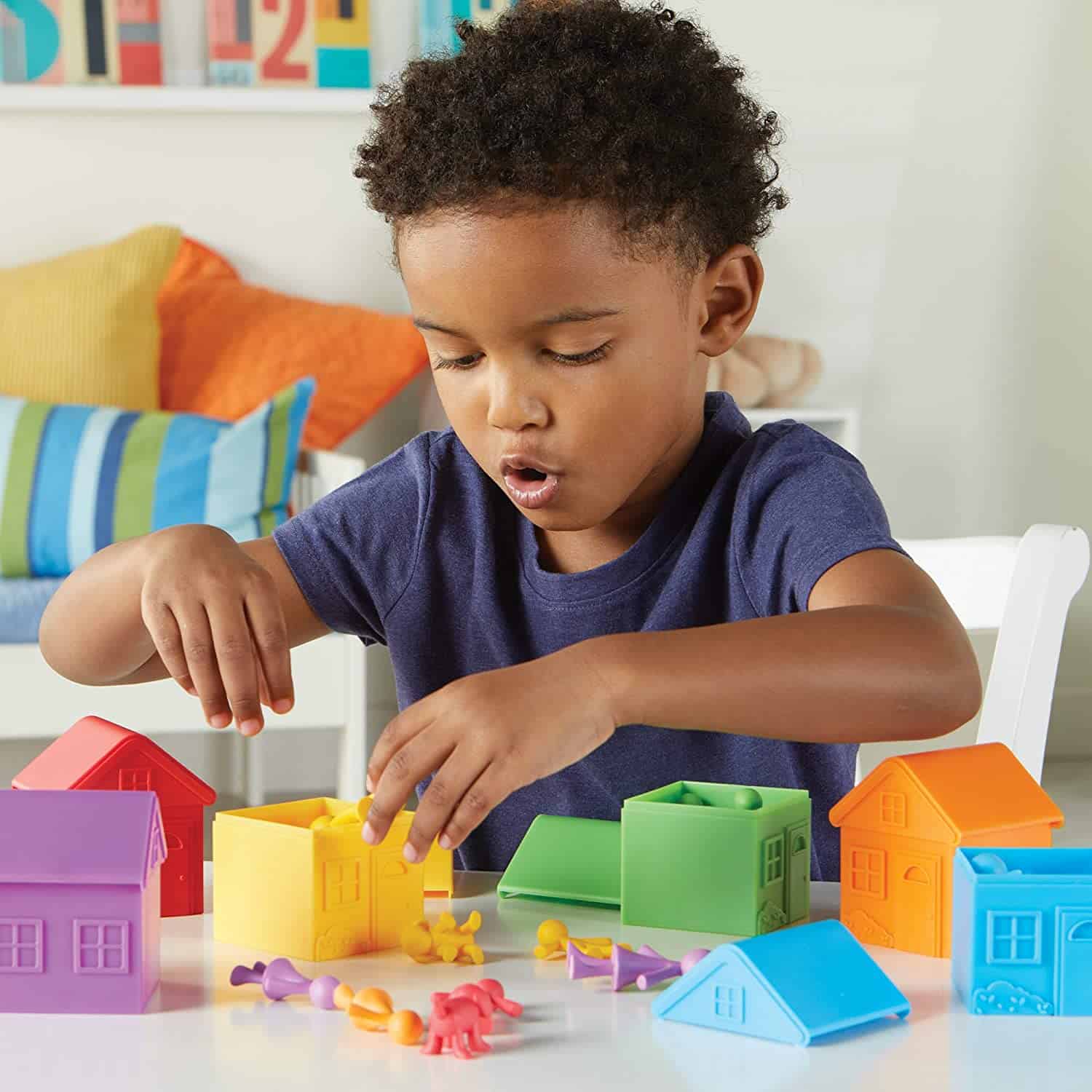
|
| Best coloring puzzle: Coogam Wooden Tetris | 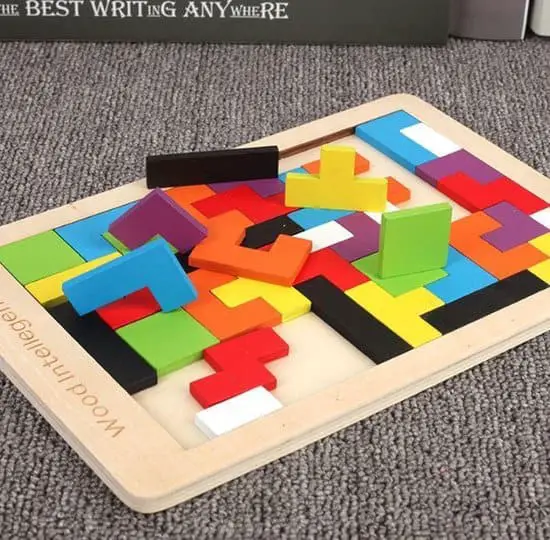
|
| Best color music instrument: Hape Xylophone with toy hammer | 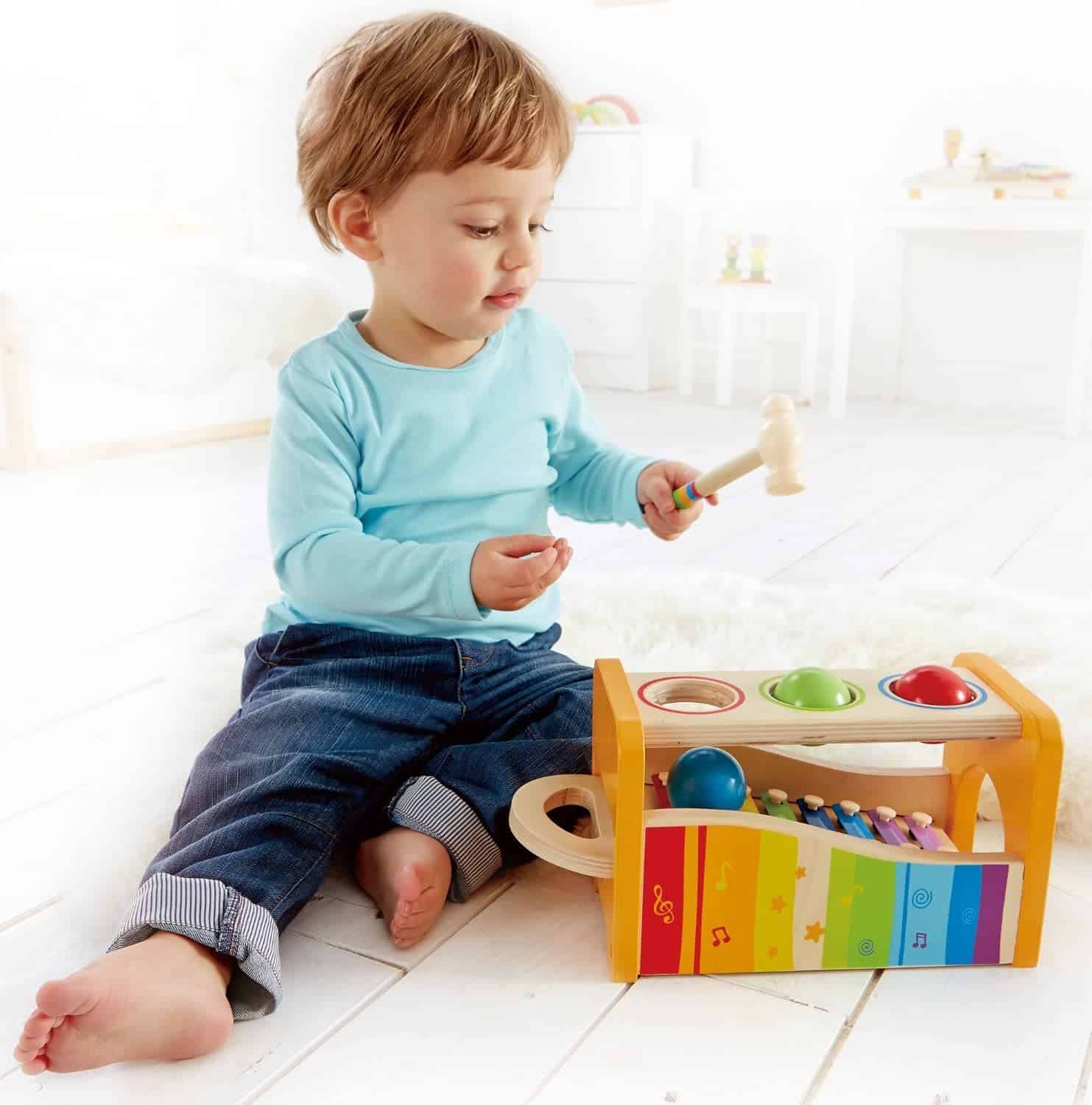
|
| Best Color Sorting Toys: Melissa & Doug Stack & Sort Board | 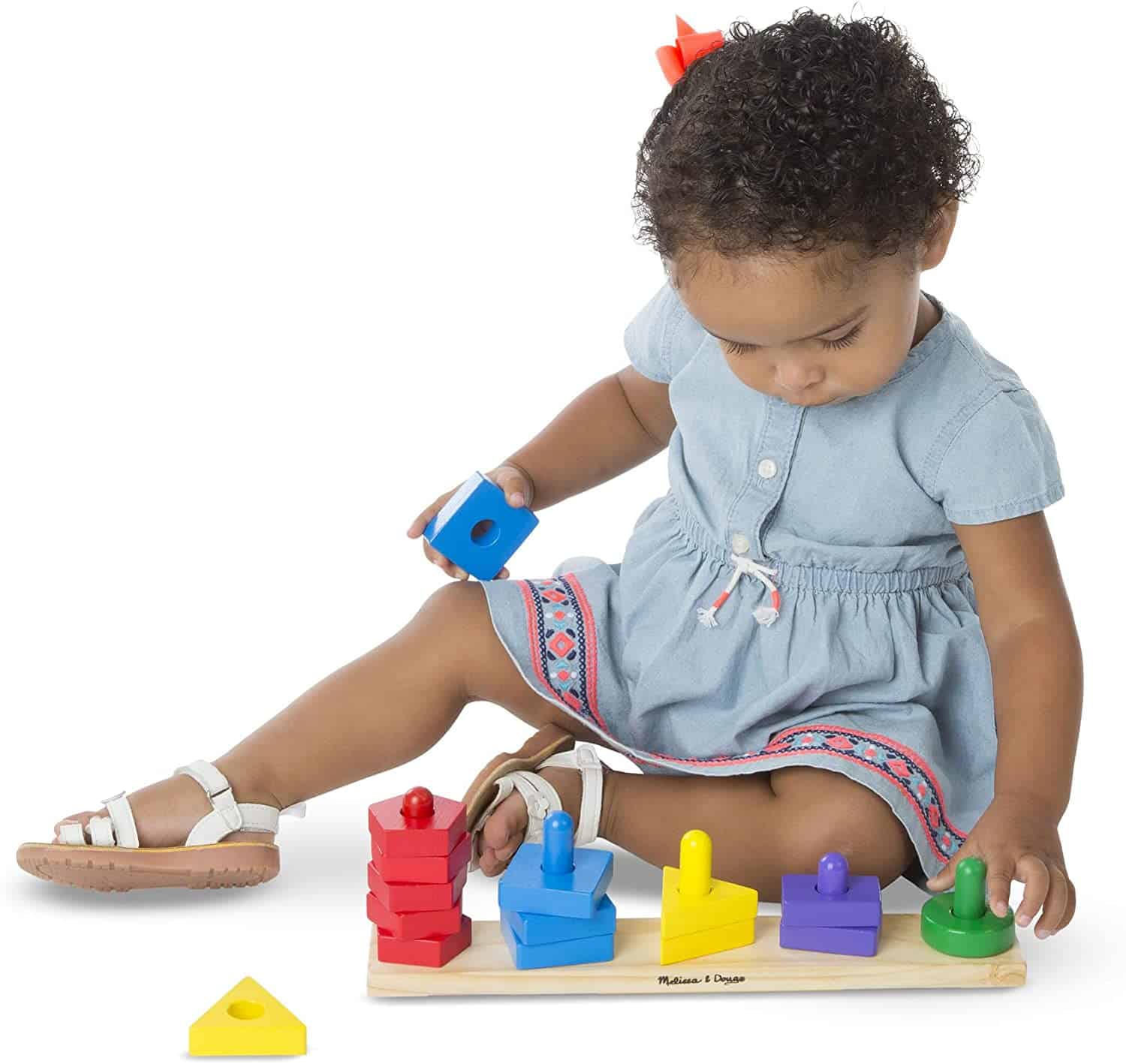
|
| Best Rainbow Colors: Lewo Wooden Toy Building Blocks | 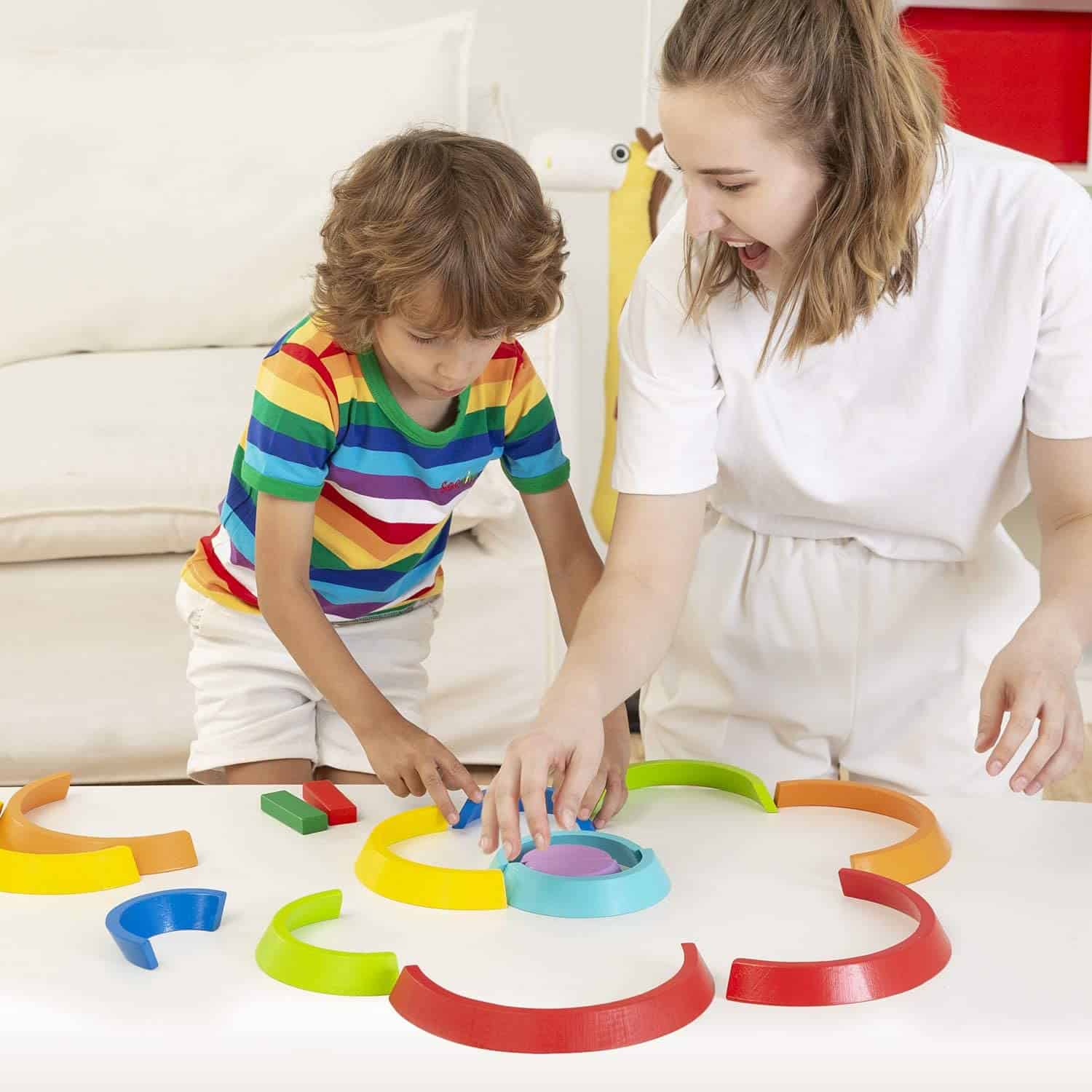
|
When can a child recognize colors? What are the different phases? Are there ways to stimulate it and which games and toys are suitable for that?
In addition to looking at the best toys for learning colors, I will give you all kinds of tips to be educational but also playful with this activity.
You will have more than enough ideas to get started with your child after reading this guide!
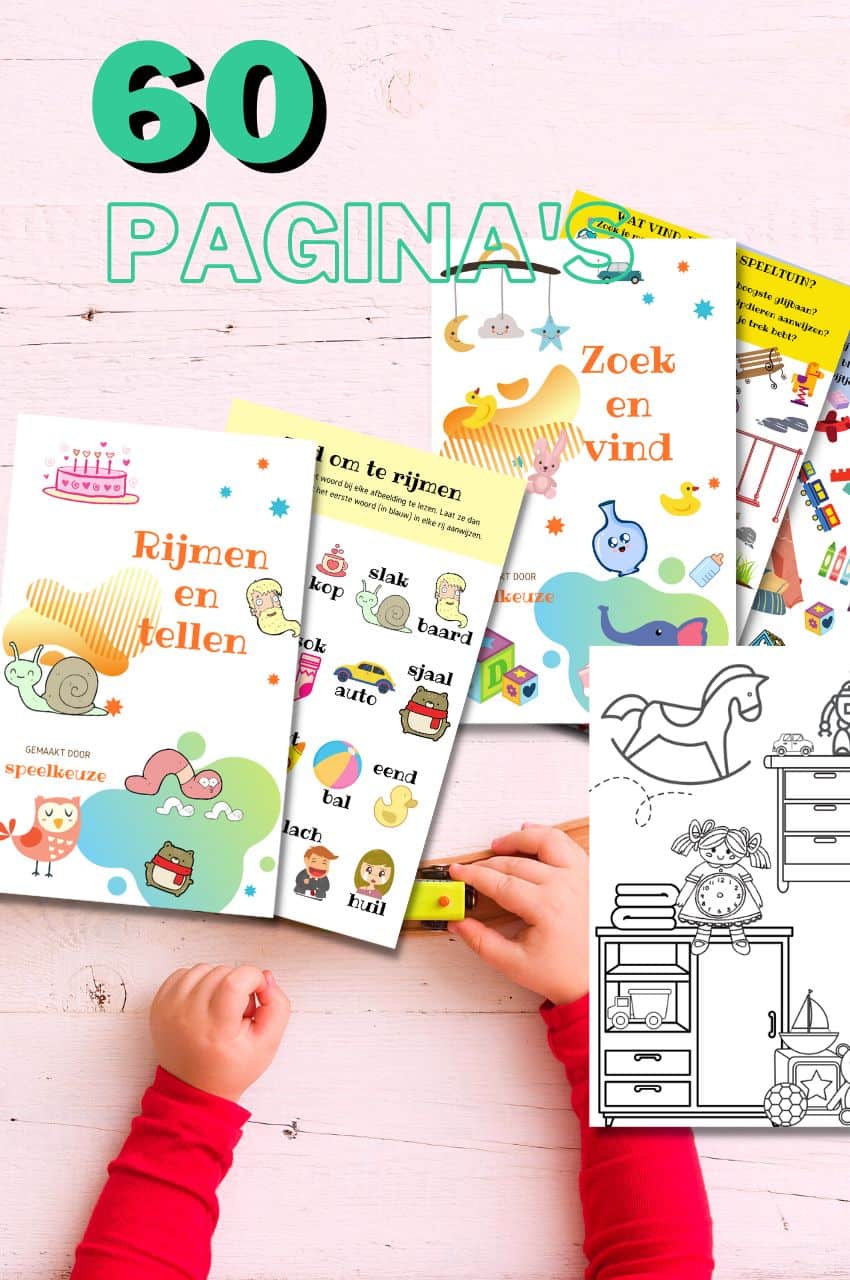
From toddler to toddler activity book collection
Educational games and coloring pages for 3 to 6 years
Your toddler and preschooler will love this e-book, along with the accompanying printables. He or she can play with it at every stage of development, together with mom and dad.
Buy at Bol.comWhat we discuss in this comprehensive post:
- 1 Learning colors is an important part of development
- 2 Best toys for learning colors reviewed
- 3 When can a child recognize colors?
- 4 My child does not know the colors yet, should I be concerned?
- 5 What different stages of learning colors are there?
- 6 Can you stimulate color learning?
- 7 Extra tips and games for learning colors
- 8 Q&A about learning colors
Learning colors is an important part of development
Recognizing and naming colors is an essential milestone the development of your child.
First of all, a child must gather information before he or she can understand the concept of 'color'.
When you constantly repeat and explain what color is - and what it isn't - a child will eventually understand the concept of color.
Then they could see and name that there is a difference between, for example, a green pencil and a red pencil.
When a child realizes that difference, it often becomes easier to learn the names of the colors.
You can sort objects with your child by color without mentioning the name of the color. The child then shows that it recognizes colors and that he or she can distinguish.
The next step would be to name the color. If a child can do that, then they show both passive and active understanding of the color.
In a further phase, children learn that there are colors that are made by mixing two other colors.
Learning the language associated with the concept and concept of 'color' must also be learned by a child in order to subsequently be able to describe the world around him.
Later in the article, I'll go into these stages in more detail.
Also read: What is educational toys for children | pay attention to these 5 things.
Best toys for learning colors reviewed
Overall nicest color toys: Learning Resources Sortingbuurt

This beautiful play set from Learning Resources, which has been highly rated by satisfied customers hundreds of times, offers fun sorting for you and your little one.
Above, I have already briefly explained why these are my favorite color sorting toys. I will now go into the details a little further.
The toy consists of 36 dolls and six two-piece houses.
The toy will not only help your child learn colors, it can also help children strengthen their early math and imaginative skills.
The dolls come in six different colors and shapes (dog, man, woman, boy, girl and baby).
Sort the figures by shape, add them up or match them in color with the corresponding house. The set offers a lot of play options.
Children will also be able to develop their social and emotional skills as they sort and chat about their own family or the dolls.
You will see that they will also soon be performing role-playing games with the dolls.
The nice thing is that the dolls can be stored very easily in the corresponding houses.
The recommended age for this toy is three years and older.
Check the latest prices hereBest color puzzle: Coogam Wooden Tetris

With this color Tetris puzzle a child can put a lot of different shapes.
Depending on how you put the pieces of the puzzle, a certain figure will come out. One time that's a robot, another time a tree and another time a gun.
With this toy set you buy multiple puzzles in one! It is the perfect toy for children to be creative, but also for relaxing.
This Tetris puzzle from the Coogam brand is made of natural and high-quality lime wood and has a smooth surface. The toy consists of 40 puzzle pieces and a shelf.
Not only does this puzzle stimulate creativity, children will also develop their eye-hand coordination and practice color and shape recognition.
The recommended age for this toy is from 3 to 6 years old.
Check prices and availability hereBest color music instrument: Hape Xylophone with toy hammer

Want to learn the colors while making music? Learning really doesn't have to be boring!
This xylophone and hammer game from Hape is made of wood and the paint used is water-based.
The toy has beautiful, colorful balls that hang above the xylophone. When your child taps the balls with the hammer, they will fall down.
Then the balls will roll over the keys of the xylophone, causing nice melodies to be played.
It is also possible to use the xylophone independently, so without the balls.
Thanks to this beautiful xylophone, a child will not only be able to get acquainted with different colors; it will also learn to appreciate music and develop hand-eye coordination better.
The toy is suitable for children from 12 months of age.
Check the latest prices hereBest Color Sorting Toys: Melissa & Doug Stack & Sort Board

A child does not need much to learn and play!
With these simple toys from the well-known toy brand Melissa & Doug, a child can be sweet for hours.
The toy consists of 15 wooden pieces and is good for developing hand / eye coordination.
This toy set allows children to stack the colorful shapes on the stand. A child can also make up his or her own games!
The wooden base depicts the shapes to be stacked on each of the sticks.
Fine motor skills are developed during play and a child learns about colors and shapes. A child can also learn to count.
A child can get creative with the blocks, the play possibilities are endless!
Melissa & Doug is a great toy brand which has been designing beautiful, creative and also affordable products for children for over 30 years.
The toys always meet the highest quality requirements and education is central.
The toy is suitable for children from 2 years old.
Check the latest prices hereBest rainbow colors: Lewo Wooden Toy Building Blocks

The learning colors with a rainbow; can it get any more fun!? Kids just love to play with colorful blocks.
This beautiful rainbow from Lewo consists of seven arches of different colors and is the perfect learning toy for your children.
The toy is made of rubberwood with non-toxic wood. The curved building blocks offer different alternatives than ordinary building blocks; a child will be stimulated to get started creatively.
The arches can be used as tunnels, small houses, rocking chairs and much more. With a little imagination you can go a long way!
Thus, with this toy, a child can build and learn the different colors at the same time.
The recommended age for this toy is 3 years and up.
Check prices and availability hereAbacuses are also often very colorful and very educational. Find my review of the best abacuses here!
When can a child recognize colors?
When a baby is just born, it only sees white and black in contrast. Only after three months will a child be able to see different colors.
Besides numbers, letters and shapes, the colors of the rainbow are one of the earliest things we learned as children.
A study conducted by scientist Anna Franklin at the University of Sussex in England suggests that humans are actually born with the ability to recognize colors.
Of course, we don't immediately know that red, red or blue is called blue, but the research shows that babies are able to distinguish colors from each other and divide them into different categories.
Color research
In the color research experiment Infants aged 4-6 months were shown 14 different colors from a color wheel.
After being given the same color several times, they were shown a different color.
If the child was staring at this new color longer than the previous one, it meant that they recognized it as a new color.
This is concluded using something known as 'suck time' which is the idea that babies will stare at something longer if it is not known to them.
After studying the responses of 179 babies, the results of the study showed that babies can separate colors into five different categories: red, yellow, green, blue and purple.
This innate ability to discern colors may have proved useful to our earliest ancestors when they had to recognize “safe” versus “dangerous” colors for certain situations in the wild, such as encountering poisonous plants or animals.
My child does not know the colors yet, should I be concerned?
According to Babycenter.com as a parent, you really don't have to worry if your child still can't recognize the colors at the age of three.
There is a fairly wide range of age at which a child can recognize and name colors.
According to Speechbuddy.com is the typical developmental timeline for children to name some colors correctly at the end of their fourth year of life.
At the age of five, children must correctly name at least four colors.
Children do not learn other intermediate colors and pastels, or the difference between light and dark blue, until around the age of eight.
What different stages of learning colors are there?
We can roughly distinguish the different phases of learning colors in the following way:
- Perception: this is about realizing that there are different colors and being able to distinguish them.
- Recognition: realizing that something has a color, but not yet knowing exactly what color it is.
- Categories: know the names of the colors and classify them in the 'category' color. This also applies to objects in that color.
- Memory: Being able to remember the colors, knowing the names and being able to name the colors when pointing.
- Troubleshooting: children now know the colors and can also 'work' with them. By this I mean that they also understand that if you mix red and green, you get brown.
Can you stimulate color learning?
You stimulate learning colors by practicing the colors in a playful way and incorporating them into daily life.
By asking what color something is, you practice recognizing and naming colors.
According to Speechbuddy (see above) learning colors should go like this:
- Start matching similarly colored items
- Make sure the child only identifies them (eg 'Show me the pink [pencil]')
- Finally, ask the child to use the colors expressively by asking "what color is this?" to have it answered.
Extra tips and games for learning colors
Speechbuddy provides several fun ideas for practicing colors with your child. I too can add a few more.
Use food
Use food for fun and language by sorting it by color.
Provide a mixed plate of snacks and encourage the child to sort them by color on the plate. For example, use different fruits, vegetables or salty snacks and sweets!
I would also like to add that you also take colored plates and cutlery into your home. Every time they eat, your child can practice with the colors.
Match the colors of clothes
Ask your child to choose his or her outfit based on colors.
Ask him or her to label each item (eg “What color is this shirt?”) And identify items in his / her closet that are the same or different.
If they are in the match phase, ask them to sort clothes by color, such as socks together or matching colored pants.
Digital coloring games
The best way to teach children colors is of course with real toys.
But in the digital world of today there are also apps that help a child to learn colors, including the App 'Colors and shapes for toddlers game'.
Also try Color Me Pete, a great activity for getting up from the couch and interacting with the iPad and the environment.
Color Me Pete uses the camera from the iPad and asks users to search for specific colors in their environment. When you've found a match, just touch the screen to select it.
Color Me Pete knows the color you pressed and will tell you if it is a match or not for immediate feedback.
Look around outside
Even when you walk outside you can name the colors of objects you encounter.
You can then immediately let your child practice naming the object.
Two birds with one stone!
But watch out! What is especially NOT the intention is to let children recognize colors on the basis of specific objects.
For example the 'yellow lemon'.
Nice painting and mixing colors
Do you have paint at home? Then let your little one enjoy using colors, but also mixing colors so that new colors are created.
You can then name the colors while playing.
Sort colors
While playing with toys, for example with LEGO and DUPLO, you can sort cubes by color.
But you can of course also do this with other objects!
Colors scavenger hunt
Make an A4 sheet with a row of colors on the left: both a 'spot' in that color and the name of that color underneath.
The intention is that the child draws an object that has that color behind each color.
For example: behind 'red' a tomato and behind 'yellow' a banana.
Q&A about learning colors
How do you explain colors to preschoolers?
Children have a natural affinity for brightly colored objects, especially red; that is why most toy products are strikingly colorful.
Showing them an object, such as a ball, by using the word 'color' along with the name of the object is a good way to teach them colors.
How can you identify colors?
A few tricks that can help:
- When kids first start learning about colors, they will 'understand' them before they can name them.
- Regularly mention the colors you see in your daily activities.
- Concentrate on one color at a time.
- Don't insist, color recognition is a gradual process.
Which color should I teach my child first?
You can start teaching your toddlers from the second year of life.
Since toddlers love bright colors, start learning the basic colors first: red, green, yellow and blue.
Before going beyond these four colors, let them understand the concept of these basic colors.
At what age should a child know his color?
While kids can distinguish between colors around 18 months, it can take up to 3 years for kids to fully understand the difference between colors and give them a name.
While color naming is second nature to most adults, it is actually a cognitively complex task for young children.
Is your child a bit older and ready for more challenges? Discover the best educational STEM toys for 5 & 6 years.

Always something to do for the holidays or rainy day?
Play Choice now has the ultimate activity book collection, with over 60 pages of fun coloring pages and educational puzzles.
Joost Nusselder, the founder of Speelkeuze.nl is a content marketer, father and loves trying out new toys. As a child he came into contact with everything related to games when his mother started the Tinnen Soldaat in Ede. Now he and his team create helpful blog articles to help loyal readers with fun play ideas.